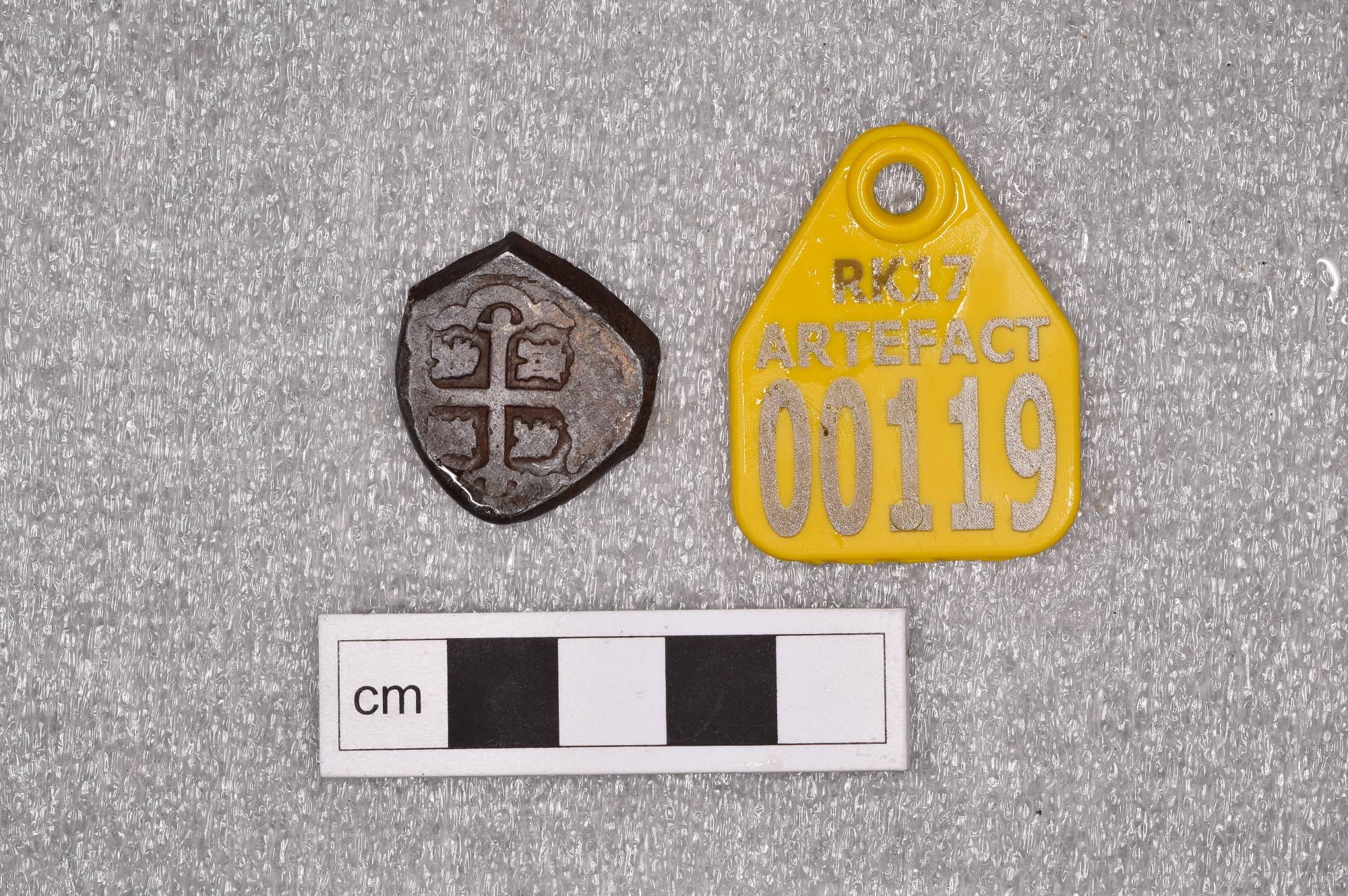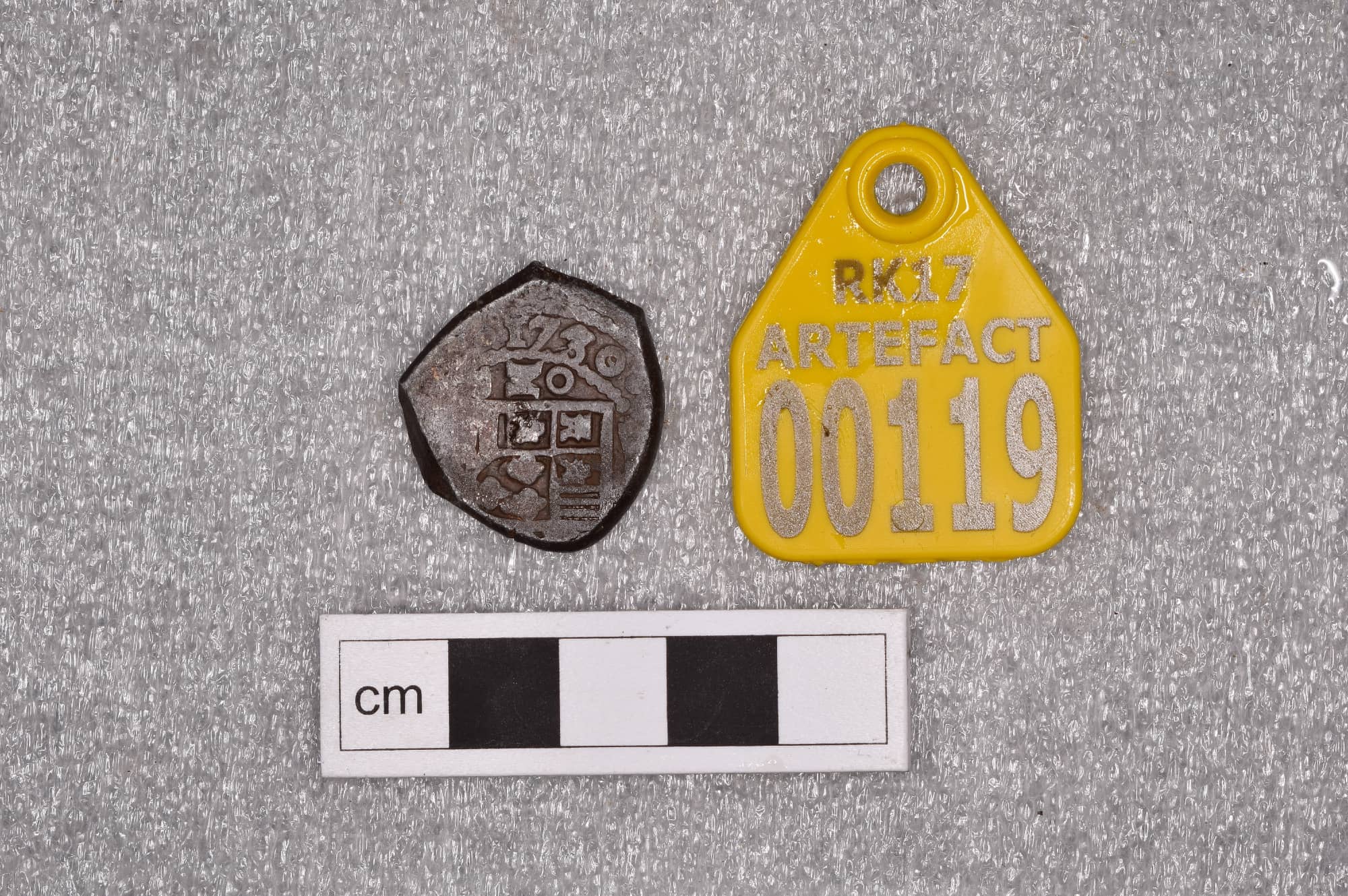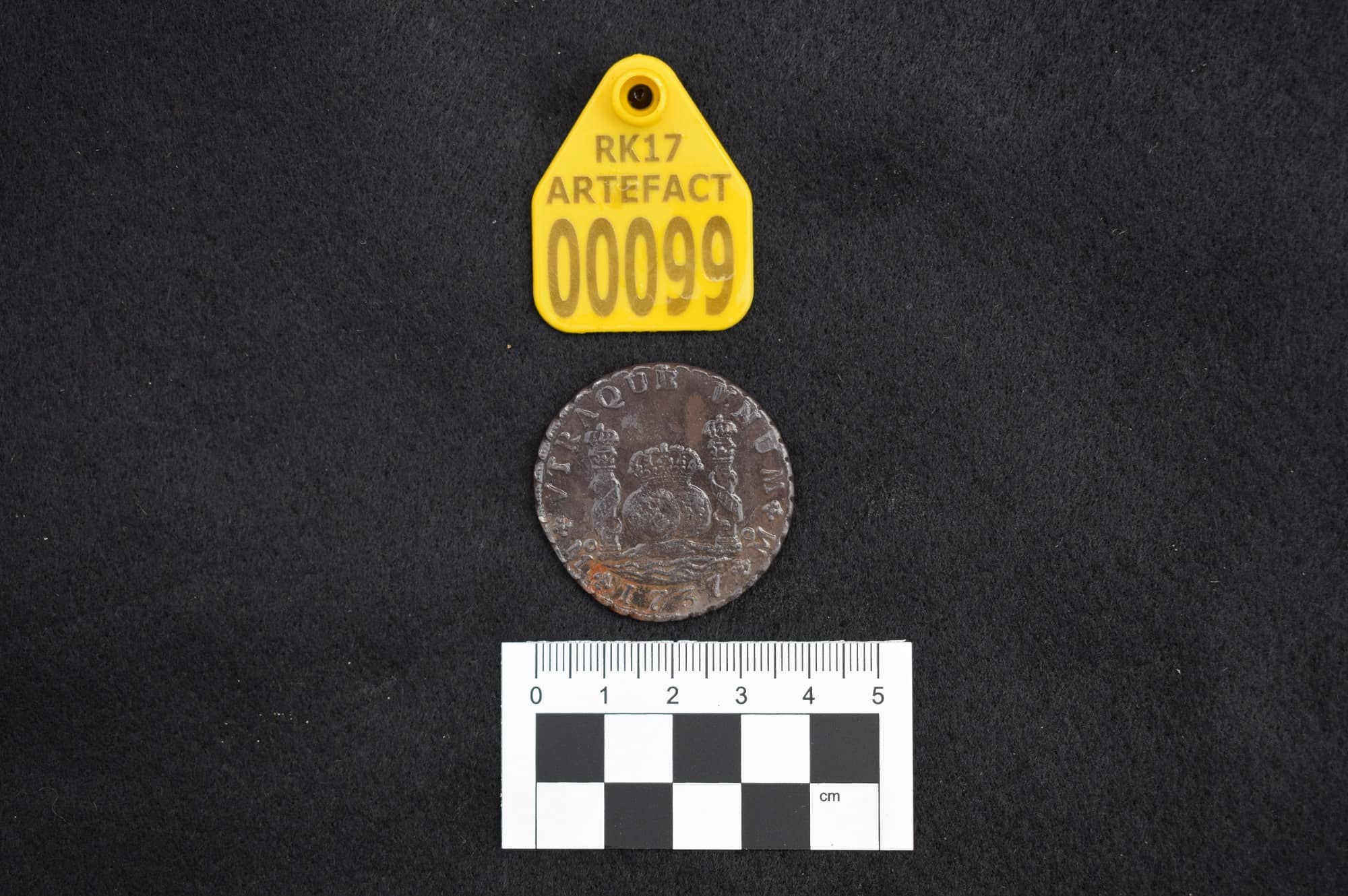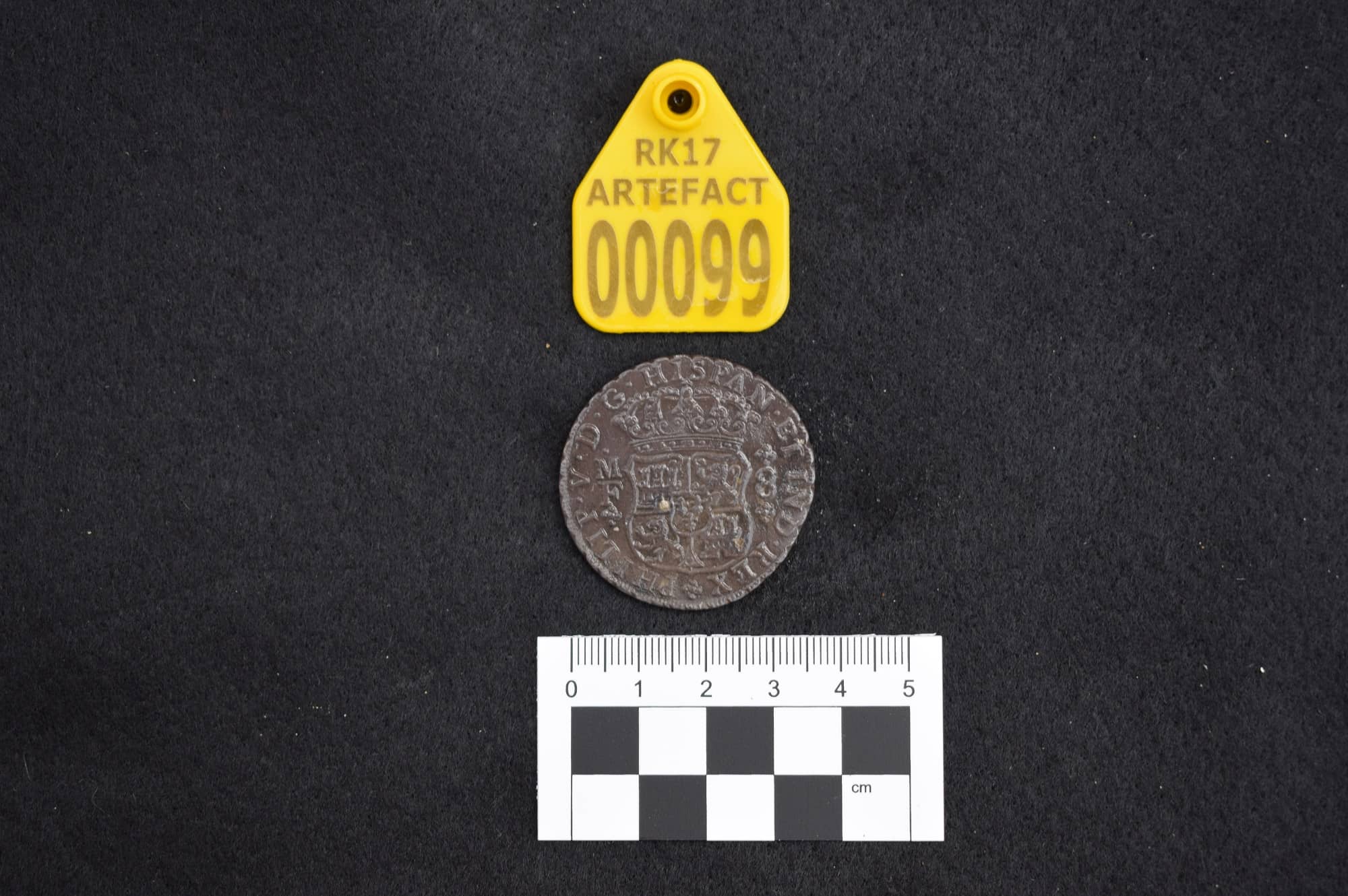The story of the Rooswijk is a heady mix of different stories from all manner of perspectives, but perhaps one of the most compelling is the story of its silver. In this week’s blog post, we will talk about in more detail the different types of coins discovered at the wreck site.
Hopefully, by the end it will become clear how these objects inform us not only about the practices of the Dutch East India Company (Verenigde Oostindische Compagnie or VOC) ‘at home’, but also their practices overseas in Batavia and how the silver it was carrying was of international economic importance to their overseas colonies
Written by Alex Bliss on behalf of the #Rooswijk1740 project
Two categories of coins
The coins found aboard Rooswijk can broadly be divided into two categories:
- ‘official’ company owned coins utilised primarily for trade,
- ‘private’ money being smuggled or unofficially taken out of the Netherlands.
Whereas the first category refers directly to money being taken out to Batavia to conduct trade on behalf of the company, the second consists coins likely owned by crew members (and potentially passengers, if there were any) intended to make profit for themselves on a private basis.

Four reales cob, frontside 
Four reales cob, backside
Import of silver coins
Because there were no silver mines in its vicinity, Batavia relied entirely on imported silver to be able to work economically. Therefore, a common undertaking involved crewmen on VOC ships accumulating silver coins to transport over on outgoing voyages, which they could sell at a higher rate than in the Netherlands and then return with a profit. In some cases, this was done by means of loans from money-lenders, and indeed through investigations into the Rooswijk’s crew documents have been found detailing the loans that some of them took out before they departed. This practice was technically illegal, though the VOC tolerated it.
It is possible that on many voyages out to Batavia, up to half the silver on board was being taken over illegally. Additional evidence which might support this is supported by the presence of some coins with holes drilled through them, which could have been intended to be sewn into the lining of clothes for safe-keeping. Most of the Rooswijk coins originate from large concreted lumps or stacks, suggesting that they were stored in a tightly-packed manner, perhaps in sacks or chests.
Diverse money
The different types of money found aboard are extremely diverse. There are Spanish 8 reale pieces also known as ‘pillar dollars’, Dutch silver ducatons or ‘Riders’ and crude Spanish ‘cob’ coins (in the denominations of 8 and 4 reales) manufactured from flattened chunks of silver cut from larger ingots or bars.
Although the ‘Riders’ would have been minted in the Netherlands, the Spanish coins were primarily produced across the Atlantic in their Mesoamerican and South-American colonies – and indeed many of these coins bear the letter ‘M’, denoting that they were made at the Mexico City mint.
In addition to these main three types of coin, there are also many 6 stuiver pieces (pronounced stow-ver) also known as ‘Rijderschellings’, which are small coins with a silver content somewhat lower than the previously mentioned three – probably somewhere around 60%. Minted in the later half of the 17th century, many of the stuivers vary in that they were struck across several of the United Provinces. As such, they display different designs depending on the region they were coined in.

Pillar dollar dated 1737, frontside 
Pillar dollar dated 1737, backside
1618 - 1739
The majority of the coins are pieces struck in or after 1700, though there are also many that date to the 17th century – the earliest coins on Rooswijk being issues of Albert and Isabella (ruling the Netherlands under the auspices of Spain) struck as early as 1618. From a numismatic point of view this is very interesting, as it demonstrates how the monetary economy in the Netherlands (as with many other contemporary European states) still had a significant makeup of older non-current coins.
At the opposite end of the spectrum, there are also coins dated 1739. These produce what archaeologists call a terminus post quem (date after which) for when the vessel sank, as obviously the Rooswijk could not have been carrying coins dated 1741 due to its sinking on the night of the 9th to the 10th of January 1740. Coins are particularly useful for this sort of dating, as they can often be dated to one specific year or in rare cases even the span of a few months.
Investigate the silver
Beyond simply analysing what the coins are, we can also investigate the composition of the silver used to make them through techniques such as XRF (X-ray fluorescence). Not only will these detail the purity of the silver, they also allow us to source it. Many metals have a unique elemental signature depending on which area they geographically are located, and silver is no exception to this rule. Although many of the Rooswijk’s coins bear mintmarks showing where they were made, it will be interesting to see if the silver used in these coins was obtained from local sources close to the mint or further afield. We can then compare and contrast these results with coins from other shipwrecks and scientific analyses directly focused on silver ores straight from the source.
We hope that this blog post has been of interest to readers, and look forward to releasing our next instalment – which will talk about armaments and ordnance carried aboard Rooswijk.